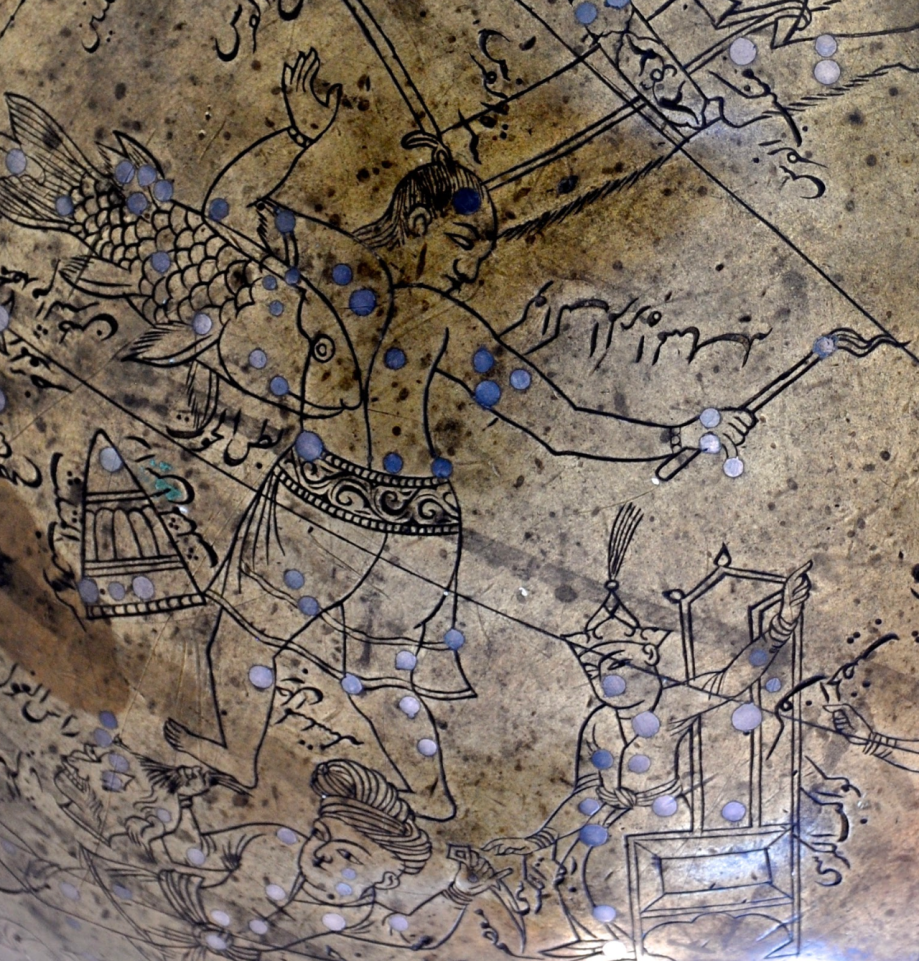
Savage-Smith states Aratus described Andromeda as having her arms outstretched and bearing bonds or fetters, for according to legend she was bound to a rock as a sacrifice to the sea-monster Cetus, by her parents Cassiopeia and Cepheus, until she was rescued by Perseus, whose figure can be seen beneath Andromeda’s.
On the Manuchihr globe she is depicted with her arms outstretched, but with no chains. To the south along her side is the northern of the two fishes comprising the constellation Pisces. Two additional representations of Andromeda are found in al-Ṣūfī manuscripts, in which a fish lies across her feet or across her body. These conceptions are drawn from the Bedouin rather than the Ptolemaic traditions.
The constellation contains 24 formed stars including the one which is outside the figure, above the northern hand. The title written near her head reads kawākib al-mar’ah al-musalsalah (the constellation of the chained woman). The star in her head [α And or δ Pegasi; Sirrah] is labeled surrat al-faras (navel of the horse), for it is shared with Pegasus. Rijl al-musalsalah (the foot of the Chained One) is the title given the star in her eastern foot [γ And]. Al-Ṣūfī says it is given this name on astrolabes, and it occurs on Ulugh Beg’s personal copy of al-Ṣūfī’s treatise.
The star on her waist near the fish is labeled baṭn al-ḥūt (belly of the fish [β And; Mirach], reflecting the Bedouin image of a large fish. The name was given also to the twenty-eighth lunar mansion. Al-Ṣūfī also called the star, in addition to the two previous names, al-rishā’ (the rope) which is also a name for the twenty-eighth lunar mansion.